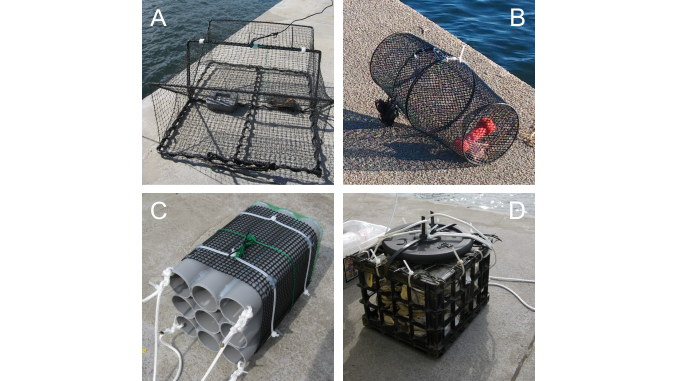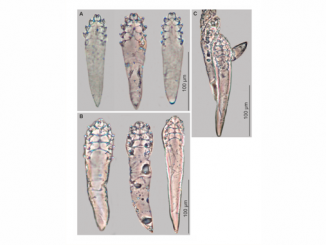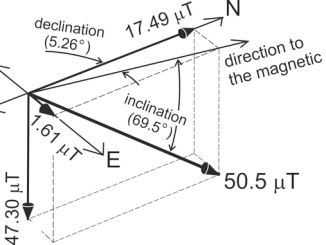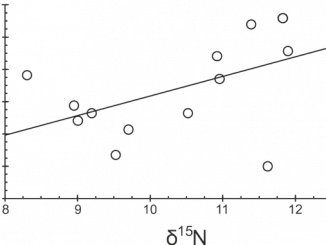
Paper category: Short communication
Corresponding author: Joanna Hegele-Drywa (joanna.hegele-drywa@ug.edu.pl)
DOI: 10.1515/ohs-2020-0028
Received: 12/03/2020
Accepted: 04/04/2020
Full text: here
Citation (APA style): Oceanological and Hydrobiological Studies, Volume 49, Issue 3, Pages 319–327, eISSN 1897-3191, ISSN 1730-413X, DOI: https://doi.org/10.1515/ohs-2020-0028.
Abstract
The effectiveness of two artificial habitat collectors, crab condo (HC1) and habitat crate (HC2), providing a refuge for small mobile fauna, was tested along with two commercial baited traps, Chinese box trap (BT1) and Gee’s Minnow trap (BT2) recommended for only single deployments under a harmonized survey of the Baltic and the North-East Atlantic. Our objective was also to determine whether a multi-deployment of baited traps in the growing season increases the diversity and abundance of collected mobile epifauna. Nineteen species of benthic mobile epifauna, including six non-indigenous species (NIS), were collected between May and October 2014 using all tested types of traps in the Port of Gdynia (southern Baltic Sea). Crustaceans, represented by 16 taxa, constituted the group with the highest diversity and abundance. Our study showed that HC1 and HC2 are more effective gear than BT1 and BT2, as both species richness (including NIS) and abundance were higher. Furthermore, the double deployment of BT1 and BT2 increased the diversity and abundance of the captured fauna. The use of artificial habitat collectors as an additional method to the already recommended baited traps for mobile epifauna monitoring in ports should be considered and the number of baited trap deployments should be increased during the growing season.
References
AquaNIS. Editorial Board. (2020). Information system on Aquatic Non-Indigenous and Cryptogenic Species. World Wide Web electronic publication. http://www.corpi.ku.lt/databases/aquanis Version 2.36+ (Accessed 8 March 2020).
Bishop, M.J. & Hutchings, P.A. (2011). How useful are port surveys focused on target pest identification for exotic species management? Marine Pollution Bulletin 62(1): 36–42. DOI: 10.1016/j.marpolbul.2010.09.014.
Brzana, R. & Janas, U. (2016). Artificial hard substrate as a habitat for hard bottom benthic assemblages in the southern part of the Baltic Sea – a preliminary study. Oceanological and Hydrobiological Studies 45(1): 121–130. DOI: 10.1515/ohs-2016-0012.
Brzana, R., Marszewska, L., Normant-Saremba, M. & Błażewicz M. (2019). Non-indigenous tanaid Sinelobus vanhaareni Bamber, 2014 in the Polish coastal waters – an example of successful invader. Oceanological and Hydrobiological Studies 48(1): 76–84. DOI: 10.2478/ohs-2019-0008.
Campbell, M.L., Gould, B. & Hewitt, C.L. (2007). Survey evaluations to assess marine bioinvasions. Marine Pollution Bulletin 55(7–9): 360–378. DOI: 10.1016/j.marpolbul.2007.01.015.
Castro, M.C.T. de, Fileman, T.W. & Hall-Spencer, J.M. (2017). Invasive species in the Northeastern and Southwestern Atlantic Ocean: A review. Marine Pollution Bulletin 116(1–2): 41–47. DOI: 10.1016/j.marpolbul.2016.12.048.
Chandra, S. & Gerhardt, A. (2008). Invasive species in aquatic ecosystems: issue of global concern. Aquatic Invasions 3(1): 1–2. DOI: 10.3391/ai.2008.3.1.1.
Chester, C.M. (1996). The effect of adult nutrition on the reproduction and development of the estuarine nudibranch, Tenellia adspersa (Nordmann, 1845). Journal of Experimental Marine Biology and Ecology 198(1): 113–130. DOI: 10.1016/0022-0981(95)00197-2.
Costello, M.J., Coll, M., Danovaro, R., Halpin, P., Ojaveer, H. et al. (2010). A Census of Marine Biodiversity Knowledge, Resources, and Future Challenges. PLoS ONE 5(8): e12110. DOI: 10.1371/journal.pone.0012110.
Coutts, A.D.M.& Dodgshun, T.J. (2007). The nature and extent of organisms in vessel sea-chests: A protected mechanism for marine bioinvasions. Marine Pollution Bulletin 54(7): 875–886. DOI: 10.1016/j.marpolbul.2007.03.011.
David, M., Gollasch, S., Leppäkoski, E. & Hewitt, C. (2014). Risk Assessment in Ballast Water Management. In M. David & S. Gollasch (Eds.), Global Maritime Transport and Ballast Water Management (pp. 133–169). Springer Netherlands. DOI: 10.1007/978-94-017-9367-4.
David, M, Gollasch, S. & Pavliha, M. (2013). Global ballast water management and the “same location” concept: a clear term or a clear issue? Ecological Applications 23(2): 331-338. DOI: 10.1890/12-0992.1
Dąbrowska, A.H., Janas, U. & Kendzierska, H. (2016). Assessment of biodiversity and environmental quality using macrozoobenthos communities in the seagrass meadow (Gulf of Gdańsk, southern Baltic). Oceanological and Hydrobiological Studies 45(2): 286–294. DOI: 10.1515/ohs-2016-0024.
de-la-Ossa-Carretero, J.A., del-Pilar-Ruso, Y., Giménez-Casalduero, F. & Sánchez-Lizaso, J.L. (2009). Testing BOPA index in sewage affected soft-bottom communities in the north-western Mediterranean. Marine Pollution Bulletin 58(3): 332–340. DOI: 10.1016/j.marpolbul.2008.10.017.
Drake, L.A. (2015). Review of “Global maritime transport and ballast water management” by M. David & S. Gollasch (Eds.), Biological Invasions 17: 3063–3065. DOI: 10.1007/s10530-015-0925-0.
Drake, J.M. & Lodge, D.M. (2004). Global hot spots of biological invasions: evaluating options for ballast-water management. Proceedings of the Royal Society B 271(1539): 575–580. DOI: 10.1098/rspb.2003.2629.
EC (2008). Directive 2008/56/EC of the European Parliament and of the Council of 17 June 2008 establishing a framework for community action in the field of marine environmental policy (Marine Strategy Framework Directive). Official Journal of the European Union 2008; L164:19–40.
EC (2017). Commission Decision (EU) 2017/848 of 17 May 2017 laying down criteria and methodological standards on good environmental status of marine waters and specifications and standardised methods for monitoring and assessment, and repealing Decision 2010/477/EU. (Text with EEA relevance). Official Journal of the European Union 125, 18.5.2017, 43–74.
Faasse, M. & van Moorsel, G. (2003). The North-American amphipods, Melita nitida Smith, 1873 and Incisocalliope aestuarius (Watling and Maurer, 1973) (Crustacea: Amphipoda: Gammaridea), introduced to the Western Scheldt estuary (The Netherlands). Aquat. Ecol. 37: 13–22. DOI: 10.1023/A:1022120729031.
Fowler, A., Forsström, T., von Numers, M. & Vesakoski, O. (2013). The North American mud crab Rhithropanopeus harrisii (Gould, 1841) in newly colonized Northern Baltic Sea: distribution and ecology. Aquatic Invasions 8(1): 89–96. DOI: 10.3391/ai.2013.8.1.10.
Gollasch, S., David, M., Broeg, K., Heitmüller, S., Karjalainen, M. et al. (2020). Target species selection criteria for risk assessment based exemptions of ballast water management requirement. Ocean & Coastal Management 183. DOI: 10.1016/j.ocecoaman.2019.105021.
Gollasch, S., Macdonald, E., Belson, S., Botnen, H., Christensen, J. et al. (2002). Life in Ballast Tanks. In E. Leppäkoski, S. Gollasch & S. Olenin (Eds.), Invasive Aquatic Species of Europe: Distribution, Impacts and Management (pp. 217–231). KLUWER Academic Publishers, Dordrecht.
HELCOM (2013). Joint HELCOM/OSPAR Guidelines on the Granting of Exemptions under the International Convention for the Control and Management of Ships’ Ballast Water and Sediments, Regulation A-4, Adopted by HELCOM Ministerial Meeting, 3 October 2013 in Copenhagen and OSPAR Agreement 2013-09.
HELCOM (2015). BALSAM PROJECT – WORK PACKAGE 4: Testing Monitoring Methods for Non-Indigenous Species in Ports. pp. 55.
Hewitt, C.L., Campbell, M.L., Thresher, R.E., Martin, R.B., Boyd, S. et al. (2004a). Introduced and cryptogenic species in Port Phillip Bay, Victoria, Australia. Marine Biology 144(1): 183–202. DOI: 10.1007/s00227-003-1173-x.
Hewitt, C.L, Everett, R.A. & Parker, N. (2009). Examples of current international, regional and national regulatory frameworks for preventing and managing marine. In G. Rilov & J.A. Crooks (Eds), Biological invasions in marine ecosystems: ecological, management, and geographic perspectives (pp. 335–352). Springer, Heidelberg,
Hewitt, C.L., Willing, J., Bauckham, A., Cassidy, A.M., Cox, C.M.S. et al. (2004b). New Zealand marine biosecurity: Delivering outcomes in a fluid environment. New Zealand Journal of Marine and Fresh Research 38(3): 429–438.
Hewitt, M. & McDonald, J. (2013). The efficacy of crab condos in capturing small crab species and their use in invasive marine species monitoring. Management of Biological Invasions 4(2): 149–153. DOI: 10.3391/mbi.2013.4.2.08.
Janas, U. & Kendzierska H. (2014). Benthic non-indigenous species among indigenous species and their habitat preferences in Puck Bay (southern Baltic Sea). Oceanologia 56(3): 603–628. DOI: 10.5697/oc.55-3.603.
Katsanevakis, S., Zenetos, A., Belchior, C. & Cardoso, A.C. (2013). Invading European Seas: Assessing pathways of introduction of marine aliens. Ocean & Coastal Management 76: 64–74. DOI: 10.1016/j.ocecoaman.2013.02.024.
Klusek, Z., Kukliński, P., Mróz, D. & Witalis, B. (2014). Underwater noise in Gdynia Harbour during piling. Hydroacustics 17: 105–114.
Lehtiniemi, L., Ojaveer, H., David, D., Galil, B., Gollasch, S. et al. (2015). Dose of truth – Monitoring marine non-indigenous species to serve legislative requirements. Marine Policy 54: 26–35. DOI: 10.1016/j.marpol.2014.12.015.
Masłowski, J. (2010). Macrobenthos of the Pomeranian Bay in 1976–2005. Wyd. A. Marszałek, Toruń, pp. 123. (In Polish).
Normant-Saremba M., Marszewska, L. & Kerckhof F. (2017). First record of the North American amphipod Melita nitida Smith, 1873 in Polish coastal waters. Oceanological and Hydrobiological Studies 46(1): 108–115. DOI: 10.1515/ohs-2017-0011.
Nunes, A.L., Katsanevakis, S., Zenetos, A. & Cardoso, A.C. (2014). Gateways to alien invasions in the European seas. Aquatic Invasions 9(2): 133–144. DOI: 10.3391/ai.2014.9.2.02.
Ojaveer, H., Galil, B.S., Minchin, D., Olenin, S., Amorim, A. et al. (2014). Ten recommendations for advancing the assessment and management of non-indigenous species in marine ecosystems. Marine Policy 44: 160–165. DOI: 10.1016/j.marpol.2013.08.019.
Ojaveer, H., Olenin, S., Narščius, A. et al. (2017). Dynamics of biological invasions and pathways over time: a case study of a temperate coastal sea. Biological Invasions 19(3): 799–813. DOI: 10.1007/s10530-016-1316-x.
Olenin, S., Ojaveer, H., Minchin, D. & Boelens. R. (2016). Assessing exemptions under the ballast water management convention: preclude the Trojan horse. Marine Pollution Bulletin 103: 84–92. DOI: 10.1016/j.marpolbul.2015.12.043.
Outinen, O., Forsström, T., Yli-Rosti, J., Vesakoski, O. & Lehtiniemi, M. (2019). Monitoring of sessile and mobile epifauna – Considerations for non-indigenous species. Marine Pollution Bulletin 141: 332–342. DOI: 10.1016/j.marpolbul.2019.02.055.
Painting, S.J., Collingridge, K.A., Durand, D., Grémare, A., Créach, V. et al. (2020). Marine monitoring in Europe: is it adequate to address environmental threats and pressures? Ocean Science 16: 235–252. DOI: 10.5194/os-16-235-2020.
Radke, B., Piketh, S., Wasik, A., Namiesnik, J., Dembska, G. et al. (2013). Aspects of Pollution in Gdansk and Gdynia Harbours at the Coastal Zone of the South Baltic Sea. The International Journal on Marine Navigation and Safety of Sea Transportation 7(2): 11–18.
Reichert, K. & Beermann, J. (2011). First record of the Atlantic gammaridean amphipod Melita nitida Smith, 1873 (Crustacea) from German waters (Kiel Canal). Aquatic Invasions 6(1): 103–108. DOI: 10.3391/ai.2011.6.1.13.
Reise, K., Olenin, S. & Thieltges, D.W. (2006). Are aliens threatening European aquatic coastal ecosystems? Helgoland Marine Research 60: 77–83. DOI: 10.1007/s10152-006-0024-9.
Roche, D.G., Torchin, M.E., Leung, B. & Binning, S.A. (2008). Localized invasion of the North American Harris mud crab, Rhithropanopeus harrisii, in the Panama Canal: implications for eradication and spread. Biological Invasions 11: 983–993. DOI: 10.1007/s10530-008-9310-6.
Ruesink, J.L., Hunter, S.L., Trimble, A.C., Heiman, K.W., Micheli, F. et al. (2005). Introduction of non-native oysters: Ecosystem effects and restoration implications. Annual Review of Ecology, Evolution and Systematics 36: 643–689. DOI: 10.1146/annurev.ecolsys.36.102003.152638.
Slack-Smith, R.J (2001). Fishing with traps and pots. FAO Training Series, ISBN 92-5-104307-8.
Sedano, F., Navarro-Barranco, C., Guerra-García, J.M. & Espinosa, F. (2020). From sessile to vagile: Understanding the importance of epifauna to assess the environmental impacts of coastal defense structures. Estuarine, Coastal and Shelf Science 235. DOI: 10.1016/j.ecss.2020.106616.
Spellerberg, I.F & Fedor, P.J. (2003). A tribute to Claude Shannon (1916–2001) and a plea for more rigorous use of species richness, species diversity and the ‘Shannon-Wiener’ index. Global Ecology& Biogeography 12: 177–179. DOI: 10.1046/j.1466-822X.2003.00015.x.
Van Hoey, G., Borja, A., Birchenough, S., Buhl-Mortensen, L., Degraer, S. et al. (2010). The use of benthic indicators in Europe: From the Water Framework Directive to the Marine Strategy Framework Directive. Marine Pollution Bulletin 60(12): 2187–2196. DOI: 10.1016/j.marpolbul.2010.09.015.
Veldhuizen, T.C. (2000). Gear type selection for the Chinese Mitten Crab habitat use study. IEP Newsletter 13: 10.
Viejo, R.M. (1999). Mobile epifauna inhabiting the invasive Sargassum muticum and two local seaweeds in northern Spain. Aquatic Botany 64(2): 131–149. DOI: 10.1016/S0304-3770(99)00011-X.
Vilà, M., Basnou, C., Pyšek, P., Josefsson, M., Genovesi, P. et al. (2010). How well do we understand the impacts of alien species on ecosystem services? A pan-European, cross-taxa assessment. Frontiers in Ecology and the Environment 8(3): 135–144. DOI: 10.1890/080083.
Watling, L. & Maurer, D. (1972). Marine shallow water amphipods of the Delaware Bay area, U.S.A. Crustaceana, Supplement 3: 251–266.
Zettler, M.L. & Daunys, D. (2007). Long-term macrozoobenthos changes in a shallow boreal lagoon: Comparison of a recent biodiversity inventory with historical data. Limnologica 37(2): 170–185. DOI: 10.1016/j.limno.2006.12.004.
Zettler, M.L., Schiedek, D. & Bobertz, B. (2007). Benthic biodiversity indices versus salinity gradient in the southern Baltic Sea. Marine Pollution Bulletin 55(1–6): 258–270. DOI: 10.1016/j.marpolbul.2006.08.024.
Zettler, M.L, Karlsson, A., Kontula, T., Gruszka, P., Laine, A.O. et al. (2014). Biodiversity gradient in the Baltic Sea: a comprehensive inventory of macrozoobenthos data. Helgoland Marine Research 68: 49–57. DOI: 10.1007/s10152-013-0368-x.




Bądź pierwszy, który skomentuje ten wpis